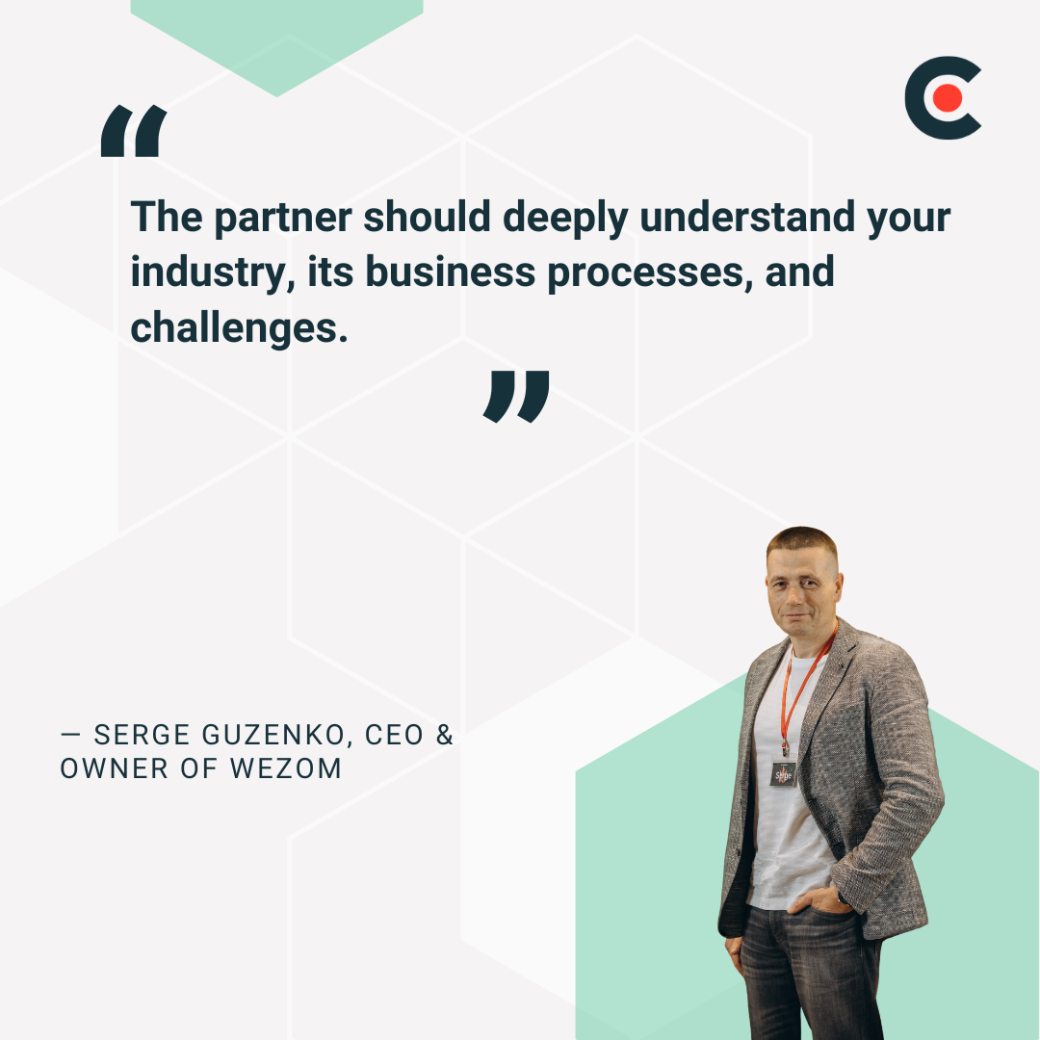

Updated December 18, 2025
Choosing the right IT services is crucial for ensuring your business operates smoothly and securely. In this article, we’ll walk you through seven essential considerations to keep in mind when evaluating IT services, from security to scalability. Use our downloadable checklist to make informed decisions and optimize your technology infrastructure.
Information technology (IT) services keep your business running smoothly and help you improve operations. Working with the right provider is essential to achieving the desired results.
Organizations start IT services projects to achieve many different results. Some want to scale to meet new opportunities or develop new products or services. Others want to stay competitive and improve the client experience in an increasingly digital world. Others are streamlining operations to work more efficiently.
Looking for a IT Services agency?
Compare our list of top IT Services companies near you
After analyzing the reviews of 47,089 IT service providers, we found specific highlights about working with an IT services company. The idea of being “timely” was mentioned over 11,000 times.
Other top trends include:
More importantly, these verified companies are open to feedback and are passionate about running well-executed and researched projects.
This article will introduce you to concepts that will prepare you for the selection of an IT service provider by going through the types of IT services you could use, project considerations, and more. Doing your research will help you get the contract — and the final product — you need. We’ve also compiled a downloadable checklist that your team can use for your IT project.
The IT services industry includes a range of offerings. Most projects will require one or more of the following types of services.

Consulting services are ideal for businesses that need an expert eye on their IT infrastructure. A consultant will examine the entire IT stack, identify current or potential issues, and suggest improvements.
Many consultants have specialized expertise and can advise on nearly any aspect of IT, from digital transformation to advanced cybersecurity. Whether you have a particular question or want to improve your overall IT, a consultant can help.
With increasing demands on tech infrastructure, companies depend on cloud services to provide internet-based offsite solutions. A cloud solution hosts resources like data storage and computing power online, letting your business scale without the high cost of on-site computing. Cloud experts help you choose, implement, and maintain services that facilitate growth.
Data breaches compromise trust in your business and currently cost an average of $4.88 million, which IBM reports is the highest average total in history. Cybersecurity services protect your internal and customer data by guarding against unauthorized access. They assess risks and repair vulnerabilities while preparing action plans in case of malicious actors.
According to the KPMG Global Tech Report, nearly one in four U.S. businesses report significant profitability growth from data investments. Data services can help you store, manage, and analyze your company's available information, making it more useful and giving you a competitive edge.
Services are available in all aspects of data use, from essential data storage to advanced data science. If you're new to data, consider starting with a data analytics provider.
These services protect the machines and connections that power your IT systems. Hardware encompasses all physical components of your system, from your cables to your device's memory. Hardware service providers can install, troubleshoot, and monitor these systems to keep your business running.
Your network includes all of your internet-enabled hardware, including devices such as sensors and cameras, and the connections between them. Networking services use hardware components like servers, routers, and interface tools to keep those connections active.
With so much riding on your tech stack, a solid project plan is essential. You can follow this IT checklist to set you and your service provider up for success.
Before choosing an IT services provider, you must understand the function and purpose of your tech stack. This means defining your business processes.
A business process is a repeatable sequence of tasks your organization follows to achieve a specific outcome. You likely have processes for your most common operational functions, such as hiring, supply logistics, invoicing, or customer contracting.
Bohdan Khmelnytskyi, CTO of UppLabs, believes that everything should be laid out for a successful IT project.
“Every software project looks simple on paper. Writing the first line of code is easy too. But then that ‘quick MVP’ turns into an endless backlog, third-party integrations break overnight, and ‘scalable’ architecture suddenly can't handle traffic spikes,” said Khmelnytskyi. “That is why, when starting every project, you should have at least a high-level project checklist.”
To determine your IT needs, identify the processes your organization follows and the role of your tech stack. Do you need to optimize any tech-related risks or friction points?

“A successful project is built on meticulous planning, clear communication, and proactive risk management,” said Gar Whaley, Co-Founder of Teal. “Without a structured approach, even the best teams can run into costly delays and inefficiencies.”
Consider what you need now and what you'll need as you grow.
After identifying issues to address, the next step is to create a technology roadmap. This is a high-level overview of your vision for the project, including how it will strengthen your existing capabilities.
Matias Vessuri, Head of Delivery at weKnow, breaks down the largest IT projects into manageable phases.
“We prioritize following our long-term strategy as a guiding framework, but understand that projects can evolve in unforeseen ways,” said Vessuri. “Before making any decisions, we conduct analyses to assess the impact and ensure that any exceptions are documented, maintaining a clear record of why adjustments were necessary.”
Your roadmap should include a broad project timeline, including phases and key milestones, and define the scope of responsibility. You don't need to be overly specific here; you'll go into detail with the project plan once you've hired.
Another trend that appeared in several IT services-related project reviews was working with an IT partner that “takes ownership,” “works well with others,” and “provides practical advice.”
Be specific with your goals and must-haves while leaving room for additional input. Ideally, you'll reference your roadmap as the project and your tech stack evolve.
Every change to your tech stack brings new security concerns. Some of the most common issues include:
Add risk mitigation tasks to your project roadmap and verify that cybersecurity personnel can access it. If you don't have an on-site cybersecurity team, consider hiring for those services.
A project budget ensures you have the necessary resources to proceed with and complete your project. The first step is determining the project's scope. Your roadmap should include your project goals as a starting point. Defining tasks or functionalities outside the project scope is essential to avoid overspending.
Next, use your roadmap to divide the project into stages. Identify the necessary services and materials for each stage and estimate the cost. You may need to get quotes from several service providers. Build reasonable cushioning into your budget wherever possible, and have a strategy for monitoring spending.
Additional Reading: ‘How to Create an IT Budget [With Template]’
Before you start any project, you want to know what the finish line looks like. Review your project goals and find what you can quantify. For example, if you're adding cloud services to your tech stack, your goals might include increased efficiency and data loss prevention. You might measure those successes in terms of project time-to-completion or a reduction in the levels of missing data per project.
If your improvements or new technology are customer-facing, identify key performance indicators (KPIs) to measure the desired effect. Some projects may directly and immediately impact revenue, while others pay off in improved customer experience and brand reputation.
Find ways to quantify these improvements as well. KPIs like net promoter score (NPS) and customer satisfaction score (CSAT) work well.
A tech project involves multiple departments, from those with a hands-on implementation role to end users. Review your project roadmap to identify all stakeholders and their respective roles. Ask yourself Then, determine what training or education each group will need.
“Regularly educate the in-house tech team to be sure they can manage, maintain, and scale what we build together,” said Dmytro Sirant, CTO of OpWorksCo. ”Here, both proper documentation and knowledge-sharing sessions help a lot.”
Administrators and management may need a business case review, where you identify the benefit of the project. Hands-on participants will need a grounding in your project roadmap and plan, and users will want to know how their workflows will change.
Determine the best person to prepare each set of educational materials and start putting them together before the project begins. Gather questions from each group and address them in your materials. If a meeting or workshop is necessary, schedule it.
Once you've set the stage for the project, you can connect with an external provider. This person or organization will be in charge or help with the technical aspects of your IT systems, so you need to be able to trust them. Set aside plenty of time to solicit recommendations, research potential providers, and interview those at the top of your list.
“Look for a partner with a proven track record of completing projects on time, within budget, and according to specifications,” said Gennady Nosenko, Director of Operations at First Line Software. “An IT partner should possess strong technical expertise, effective communication skills, and a clear understanding of your business needs to ensure that the final product provides real value.”
Reference your roadmap and project goals to find providers with specialized expertise in your project type.

“The partner should deeply understand your industry, its business processes, and challenges,” said Serge Guzenko, CEO & Owner of WEZOM. “Prior experience with similar projects enables more efficient implementation.”
Results are the most critical qualification when hiring an external service provider, so look for providers with a high-quality portfolio.
Additional Reading: 'Managed IT Services Guide'
Where you search matters. At Clutch, we provide businesses with a convenient place to search for qualified and reliable service providers. We use an advanced vetting process to ensure our top IT service providers are:
Know that you can trust the reviews you find on Clutch. We go above and beyond to verify each post and reviewer to ensure authenticity, so you can trust what you read.
View more detailed insights into the field of IT services with our downloadable checklist.
If you're unsure where to start regarding your actual IT services project, use our downloadable checklist!
IT services are available for businesses of any size and type. The first step is determining what you want to achieve with your IT infrastructure and what roadblocks currently exist.
Once you know the problem or pain point, identify the services you might need. Decide whether you're looking for a provider with specialized expertise or one with more general knowledge. This will help you narrow down the possibilities.
Next, follow the IT checklist above to prepare your project description and choose a provider. Be as specific as possible about your goals, requirements, and budget.
Be sure to discuss the next steps with any provider you choose. Most IT projects require launch support and troubleshooting after implementation. It's essential to know how involved your provider will be. Remember, IT services can always help you manage things, even during the maintenance phase.


